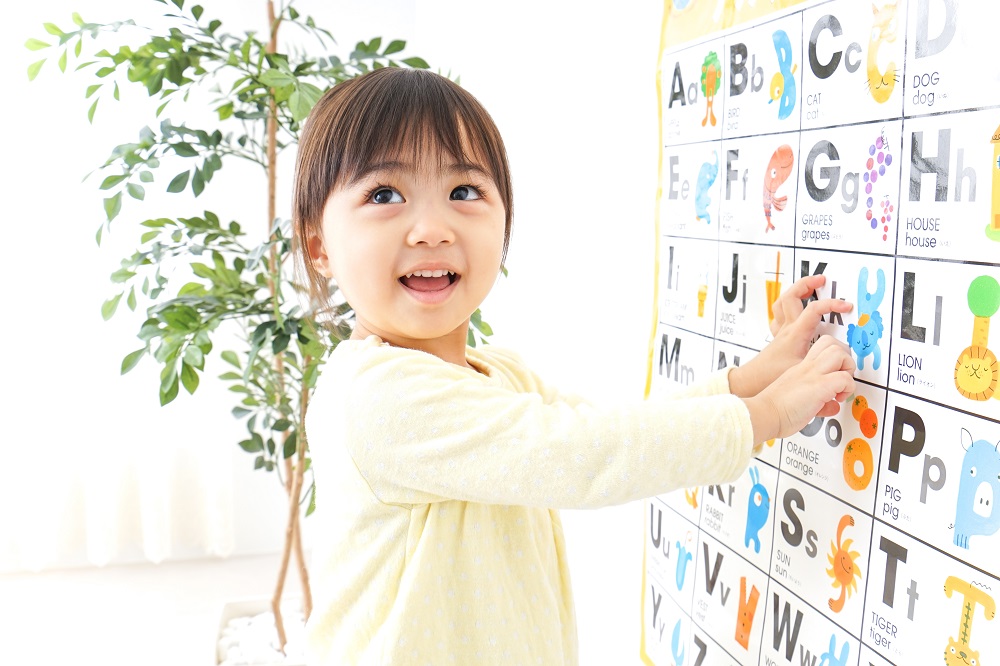Discover HKBU
Exploring language development in children
24 May 2022
Language is a defining feature of humankind, and Dr Angela He, an Assistant Professor from the Department of English Language and Literature, is investigating how young children learn to speak their mother tongue.
“We often take our language achievements for granted,” says Dr He, a linguist who specialises in first language acquisition. “Language is not only an important communicative tool, but it is also a window into the human mind. Language acquisition, therefore, is a window into children’s developing mind.”
An important aspect of Dr He’s work asks what factors constitute the best language input that parents and educators should provide to young children. In a commentary paper recently published in the journal Infant and Child Development, Dr He highlighted two significant – yet under-discussed – factors: the importance of prioritising quality over quantity, and the timing of providing the language input. Both factors emphasise the importance of taking both our nature, such as our innate biology, and our nurture, such as how we are raised, into account.
“In parenting and educating our kids, we tend to think about the nurture side of the story, and we often seem to impose an artificial boundary between nature and nurture. But the message that I wanted to deliver in the paper is that even when we are talking about nurture––the language input––we need to take into consideration the role of nature, because nature may affect the absorption of nurture.”
Less is more
“Sometimes when people want to optimise the input to their children, they say things like ‘talk to your children more’ or ‘use more complex sentences’. But it is not always the case that the more given, the more received; rather, there is often a gap between the input and the ‘taken in’. This gap is particularly big with children, because those ‘little minds’ are undergoing a lot of development and maturation,” says Dr He.
Dr He mentions a neurological process known as myelination as an example. This process involves layers of a fatty substance called myelin wrapping around and insulating the nerve cells’ axons in the brain. These axons function like wires, and the myelin sheaths help electrical signals pass along the axons and prevent them from leaking out, much like the plastic that surrounds headphone cables, thereby aiding signal processing in the brain. However, myelination takes time to mature, and it is not completely mature until around age 10. In language acquisition, the ability to process the incoming language input––so as to best utilise nurture––is essential, yet such ability might be significantly limited when brain maturation processes such as myelination are ongoing. As a result, our biology can have a significant impact on how much we can process––how much input we can take in––at a young age.
For instance, in a previous study and several ongoing studies, Dr He found that the addition of a single adjective to the phrase “the boy” – in this case, “tall” – was enough to overwhelm the three-year-old children’s processing capacity, such that they could easily learn a new verb following “the boy” but not one that followed “the tall boy”.
Although there is no set number of words that match up with certain developmental stages, as age, individual differences between children and sentence construction can all make a difference, the message is very clear: It is important to tailor the language input to the developing mind, in other words, to tailor nurture to nature.
Dr He summarises, “In some ways for young children, too many words are like more food that our body cannot absorb; so, as input providers, we sometimes must sacrifice quantity to improve quality.”
Besides the linguistic side of things, there are also other important cognitive factors relating to memory that we need to consider. There, we will see that the timing of input provision also plays an unneglectable role.
The magic of sleep
“Sleep helps us remember,” says Dr He. “We all have a naturally-endowed sleep/wake cycle. We learn new things during wakeful time, and when we sleep, our brains do not just idle around, but instead, they are busy strengthening and reorganising our memory. In language acquisition, this helps commit newly-learned words and grammar to our long-term memory.”
While sleep science is very well developed, Dr He says that the link between sleep and language is relatively understudied, especially with young children, and this is something she is trying to remedy with her work at HKBU.
In particular, young children often sleep for a long time at night, and they also take frequent daytime naps. Dr He says this aspect of their nature has added benefits, as it puts them in a good position to make the most of their time sleeping to consolidate new knowledge, and Dr He’s previous study in the journal Cognition has also shed some light on this process.
“Sleep is an effective learning aid. Do parents know this? Well, we tell bedtime stories. But do we do so because we know the benefits of sleep? Perhaps not. And we should!” says Dr He, jokingly. “Knowing this, we might strategically carry out more difficult learning tasks before sleep.”
Dr He believes that older children could also benefit from naps and more sleep, and while such activities are common in kindergartens and early education, she says it should extend beyond that age group to primary and even secondary school students.
“Some people view sleep as a waste of time, especially in today’s fast-paced lifestyle. But it’s my long-term goal to make napping a more socially acceptable routine, in the same way that a lunch break or a physical exercise break is enforced. Sleep can have a magical effect on our learning, and we should never sacrifice our sleep.”
As for her recent research, Dr He’s current projects are delving deeper into language processing and sleep. While one big change following a move from the US to Hong Kong involves the switch from studying how children learn English to Cantonese and Putonghua, the same principles apply when it comes to acquiring one’s mother tongue.
“Whether it’s English or Cantonese, less is more and timing matters,” she says.

